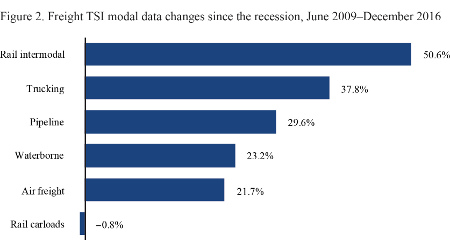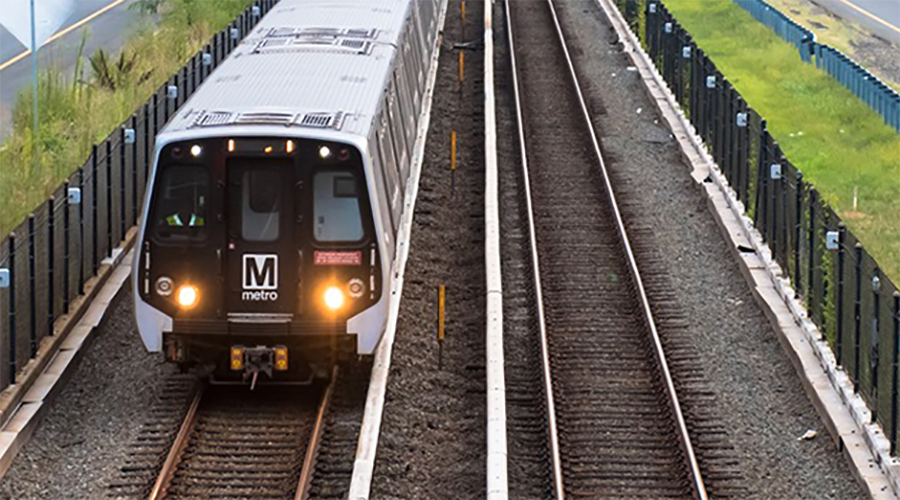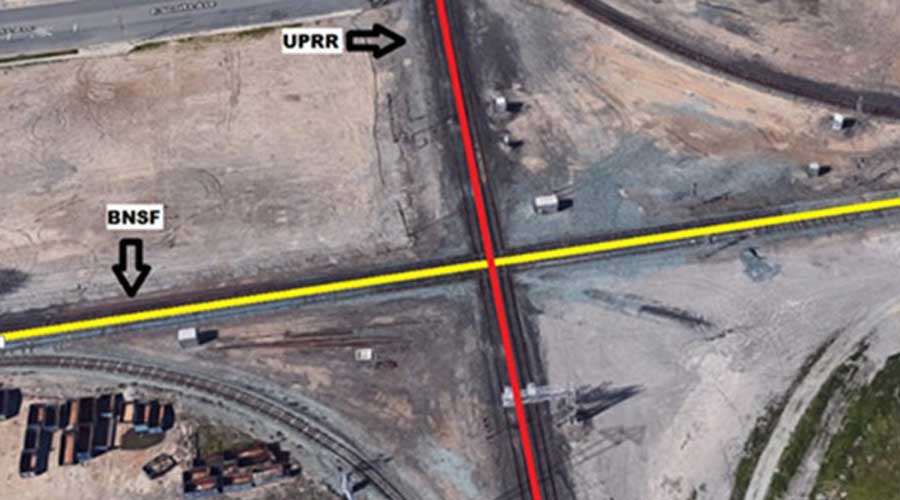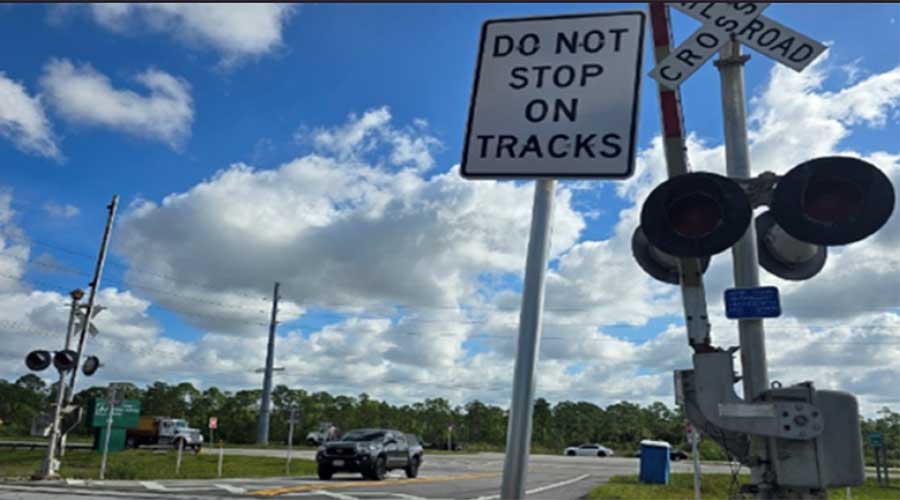Stay updated on news, articles and information for the rail industry
 railPrime
railPrime
8/10/2017
Rail News: Rail Industry Trends
BTS: Rail intermodal logged fastest growth since Great Recession

All but one of the major freight modes grew since the recession ended in June 2009, with rail intermodal growing the fastest, the U.S. Department of Transportation's Bureau of Transportation Statistics (BTS) reported last week.
From June 2009 to December 2016, the rail-intermodal mode grew 50.6 percent based on seasonally adjusted data that comprises the freight Transportation Services Index (TSI), BTS officials said in a press release.
The freight TSI measures month-to-month changes in for-hire freight shipments by transportation mode in tons and ton-miles, which are combined into one index. The seasonally adjusted index measures the output for the for-hire freight transportation industry and consists of data from trucking, rail, inland waterways, pipelines and air freight.
The data showed that the growth in rail intermodal since the recession's end was followed by trucking at 37.8 percent, pipeline at 29.6 percent, waterborne at 23.2 percent, and air freight at 21.7 percent. During the same period, the freight TSI rose 29.7 percent.
The only mode that did not show growth over the period was rail carloads, which declined 0.8 percent. The decline in carload shipments occurred as the same time as a decline in coal shipments. Total coal shipped by Class Is peaked in 2008 at 878.6 million tons, then dropped to 787.6 million tons in 2009. Coal shipments continued to fall to 638.1 million tons in 2015.
All modes declined during the recession.
After reviewing recent freight movement, BTS officials determined that transportation services — as measured by the TSI — continue to lead the economy. The TSI tends to turn in advance of slowdowns and accelerations in economic growth, they said.


 2025 MOW Spending Report: Passenger-rail programs
2025 MOW Spending Report: Passenger-rail programs
 Gardner steps down as Amtrak CEO
Gardner steps down as Amtrak CEO
 Guest comment: Oliver Wyman’s David Hunt
Guest comment: Oliver Wyman’s David Hunt
 Women of Influence in Rail eBook
Women of Influence in Rail eBook









